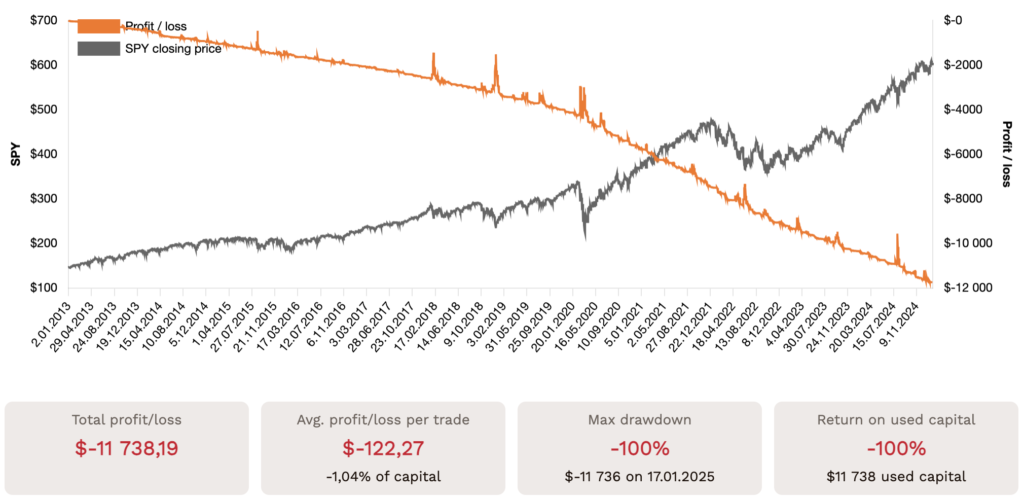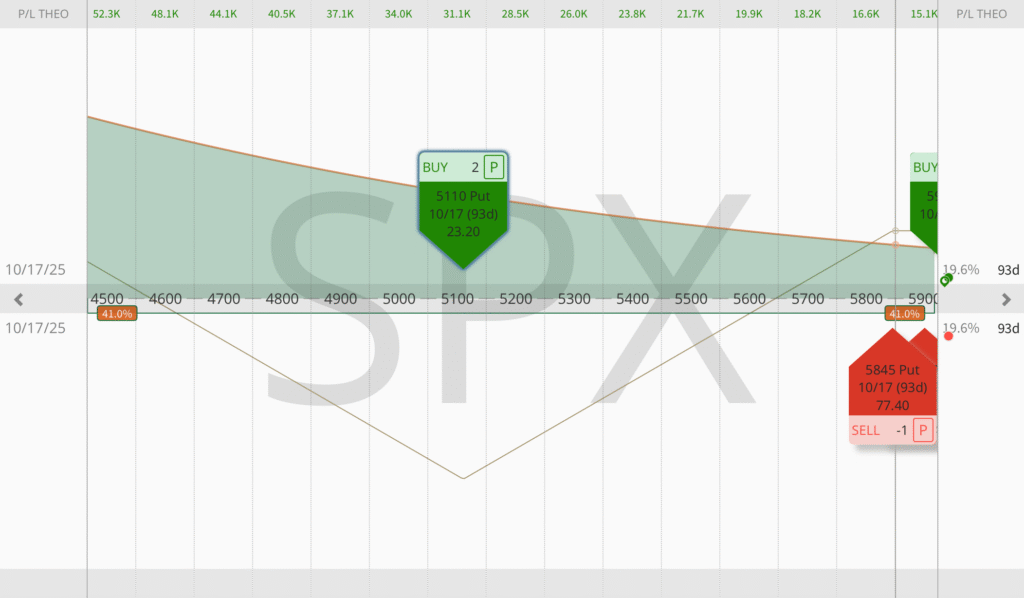In investing, most strategies assume the market behaves in a “normal” way. But anyone who’s been trading for a while knows that markets can be wildly unpredictable. Rare, extreme events, called “Black Swan” events, can come out of nowhere and crash the market, causing severe losses. That’s why I find the Black Swan Hedge so valuable. It’s an options strategy designed to protect your portfolio from these unexpected tail risks. In this post, I’ll explain how the Black Swan Hedge works and why it’s essential for managing risk. I’ll also share some practical steps to help you implement it.
What Is a Black Swan Event?
Before diving into the hedge, it’s important to understand the term. A Black Swan event is a rare, unexpected occurrence that has severe consequences. Popularized by Nassim Nicholas Taleb, the term describes events that are nearly impossible to predict but have an enormous impact when they occur. Think about the 2008 global financial crisis, the 9/11 attacks, or the COVID-19 pandemic. These are all examples of Black Swan events.
Characteristics of Black Swan events:
- Rare: Highly improbable but not impossible.
- Impactful: Causes widespread financial, economic, or social disruption.
- Retrospectively predictable: After it happens, people claim they “saw it coming”.
For options traders, these events present significant challenges. During a Black Swan event, markets often take a sharp dive, and assets that typically move independently can end up crashing in unison. This correlation spike leaves even diversified portfolios exposed to substantial losses.
Why Do You Need a Black Swan Hedge?
Most traders design their portfolios with diversification in mind, aiming to spread risk across various asset classes and sectors. In a normal market, this strategy works because different assets often don’t move in sync, they may even have negative correlations. However, in extreme downturns, that safety net can quickly vanish. When panic hits, investors tend to sell off everything just to hold cash, and suddenly, the correlations between assets spike.
In these high-volatility moments, assets that usually behave independently start dropping together. This phenomenon, known as a correlation spike, can make diversification and hedging strategies much less effective, leaving your portfolio vulnerable to large losses. The table below illustrates how correlations between various assets and the S&P 500 (SPY) change as volatility rises.
| VIX Level | LUV | EEM | AAPL | XLE | COST | Avg. |
| Above 20% | 0.55 | 0.74 | 0.78 | 0.59 | 0.62 | 0.66 |
| Above 30% | 0.63 | 0.80 | 0.86 | 0.65 | 0.70 | 0.73 |
| Above 40% | 0.74 | 0.89 | 0.93 | 0.86 | 0.78 | 0.84 |
Here’s what the data shows:
- When the VIX exceeds 20%, the average correlation between these assets and SPY is 0.66, which is already elevated compared to normal market conditions.
- At VIX levels above 30%, correlations increase further, averaging 0.73.
- In extreme conditions, when the VIX exceeds 40%, correlations spike to an average of 0.84, with some assets like AAPL and XLE showing correlations as high as 0.93 and 0.86.
This highlights how, during periods of market stress, different asset classes and sectors, whether it’s emerging markets (EEM), energy (XLE), or even consumer staples like Costco (COST), lose their independence and start behaving similarly.
What Is a Black Swan Hedge?
When market downturns cause asset correlations to spike, even a well-diversified portfolio can take a hit. Relying solely on diversification often leaves traders exposed when they need protection the most. That’s where a Black Swan Hedge comes into play. Rather than managing day-to-day risk, this strategy uses options to guard against those rare, catastrophic events. The key features of a Black Swan Hedge include:
- Downside protection: Profits when the market falls sharply.
- Low cost: Typically implemented with out-of-the-money options, which are relatively inexpensive.
- Crisis focused: Specifically designed to counteract extreme market events rather than everyday volatility.
The Simplest Black Swan Hedge: Why It Fails
Remember The Big Short? The movie showed how Michael Burry made a bold bet on the housing market collapse by buying credit default swaps – financial tools that acted like out-of-the-money puts – designed to soar in value when disaster struck. This idea forms the basis of a simple Black Swan Hedge: buying far OTM put options (often called teenies) on a major index like the S&P 500 to protect against a catastrophic crash. Typically, traders buy these teenies, which cost around $2 in premium or less, with expirations ranging from 30 to 90 days.
Here’s how it works:
- You purchase put options with strike prices well below the current market level, often 20% or lower.
- These options are cheap because the market believes a massive crash is highly unlikely.
- If a crash occurs, the value of these puts soars, helping offset losses in your portfolio.
In options lingo, the phrase “buy teenies to own Lamborghinis” captures the potential for huge windfall gains from these small, inexpensive options. While the concept is straightforward and the dramatic success stories (like Michael Burry’s) make it seem irresistible, this approach has several critical flaws for most traders:
- High long-term cost: Far OTM puts may seem cheap on their own, but the costs can add up significantly over time if you buy them regularly. Since Black Swan events are extremely rare, most of these options expire worthless. Moreover, because long puts lose value over time (negative theta), their cost erodes slowly but steadily, dragging down your overall returns.
- Extremely low probability of profit: The core issue is that Black Swan events don’t happen often. Essentially, you’re paying for insurance against an event that might not occur for years, or even decades, making this strategy more like an expensive safety net than a practical investment.
- Inefficient coverage: This hedge only works in extreme scenarios. It offers little to no protection during more moderate declines that can still significantly impact your portfolio. For example, in 2022, the S&P 500 fell nearly 27% over a prolonged period rather than in a sharp crash. In such a scenario, far OTM puts would have expired worthless, leaving traders exposed.
While this strategy worked remarkably well for Michael Burry during the 2008 crisis, it isn’t practical for most traders. The long-term costs, limited coverage, and inefficiency in handling typical market corrections make it more of a theoretical exercise than a sustainable hedge. Options traders need to explore smarter, more cost-effective methods to safeguard against those rare but devastating market events.

A Smarter Approach to the Black Swan Hedge
If you’ve found that simply buying out-of-the-money puts is slowly draining your portfolio, you’re not alone. I knew I had to find a better solution. I asked myself: how could I protect against those rare, extreme events without bleeding cash over time? I wanted a hedge that was truly theta positive, one that gained strength as time passed. I aimed for a strategy that could scale to match the size of my standard at-the-money trades. And most importantly, I wanted it to be as cost-effective as possible, or essentially free.
That’s when I turned to the Black Swan Hedge. This strategy goes beyond just buying far OTM puts, and I’ve learned a lot from traders like Ron Bertino. His method uses a dynamic options setup that protects against major market moves while cutting down on the negative effects of time decay. Here’s one example setup that works well (there are many variations out there!):
- Strikes: Sell three short /ES puts at around $3, and buy five long puts 50 points below the short strike to create a 3-to-5 backratio spread.
- DTE: Start by purchasing the Black Swan Hedge at about 120 DTE, ideally on a day when the market is up.
- Short put harvest: Close the short puts when they reach $0.20 or at 14 DTE, whichever comes first. Then reopen the next tranche.
Remember, the Black Swan Hedge is primarily a vega and vanna hedge (with vanna being the rate of change of vega). Running it as a campaign helps you manage tail risk systematically over time while keeping the cost of protection as low as possible.
There are many ways to implement this strategy, along with smart financing techniques that can keep the cost low, or even zero. I’ve developed a more sophisticated version of the Black Swan Hedge that actually lets you enter for a credit! With this setup, you can collect up to $10,000 if the market only sees a shallow correction, and potentially much more if a full-blown market Armageddon hits. I break down all the details in my trading plan.

Black Swan Hedge versus Teenies
In one backtest during the Aug 24, 2015 crash, Ron Bertino showed that teenies purchased for $275 grew to a value of $4,785. In contrast, a Black Swan Hedge (BSH) trade, set up for about $280 on the same day, surged to $8,410, which is nearly twice the profit for the same initial cost! This isn’t just a matter of buying puts; the BSH is a dynamic options setup designed to give you more protection for your money while keeping costs low.
In a backtest of the August 24, 2015 crash, Ron Bertino showed that “teenies” bought for $275 grew to $4,785. In comparison, a Black Swan Hedge (BSH) set up for around $280 on the same day exploded to $8,410. Nearly double the profit for the same initial cost! And this isn’t just a matter of buying puts; the Black Swan Hedge is a dynamic options structure built to deliver more protection per dollar while keeping costs low. OptionsJive’s version of the Black Swan Hedge is even more efficient than Bertino’s, because we enter for a net credit!
VIX Calls As A Portfolio Hedge
Another way to protect your portfolio is by buying VIX calls. Research shows that adding a small amount (1% to 3% of your portfolio) to VIX calls can help a lot during market crashes. The idea is simple. When the market crashes, volatility spikes, and VIX calls gain value quickly. A small allocation of out-of-the-money VIX calls helped turn big losses into gains during tough times.
You can adjust the number of VIX calls you buy by looking at your portfolio’s overall risk, measured by its beta, and by comparing them to SPY puts using a conversion ratio. While VIX calls might not completely protect you from every downturn, they offer a cost-effective and smart way to guard against those rare, extreme market moves.
Summary
Black Swan events are very rare, but when they strike, they can wipe out your unprotected options portfolio. Just like car or home insurance, hedging may feel like a sunk cost most of the time. But when disaster hits, you’re glad it’s there.
Some traders argue that you should only risk a small portion of your net worth in the market. For example, if you put only 20% of your net worth into trading, you must be ready to lose it all. Most people don’t have millions in net worth, and even if you do, your capital should work for you, not sit idle.
If you want to avoid catastrophic losses during a market crash, you need proper protection. Teenies are one option, but if you want twice the payout for the same cost, the Black Swan Hedge is a better choice. In my trading plan, I break down my own version, which lets you enter for a net credit. With this setup, you can collect up to $10,000 in a shallow correction, and even more in a full-blown crash.
Of course, as Tom Sosnoff says, the best hedge is staying small and using your buying power wisely. My trading plan outlines how to do both, while preparing for the unexpected.
